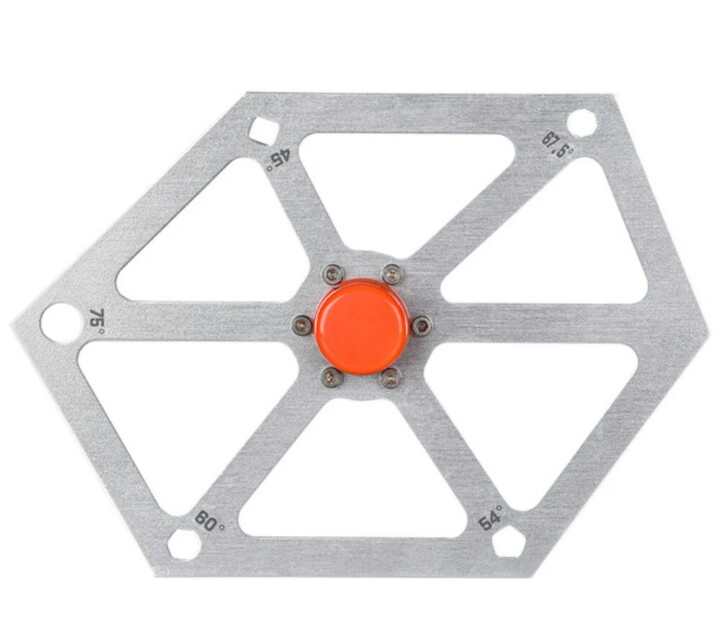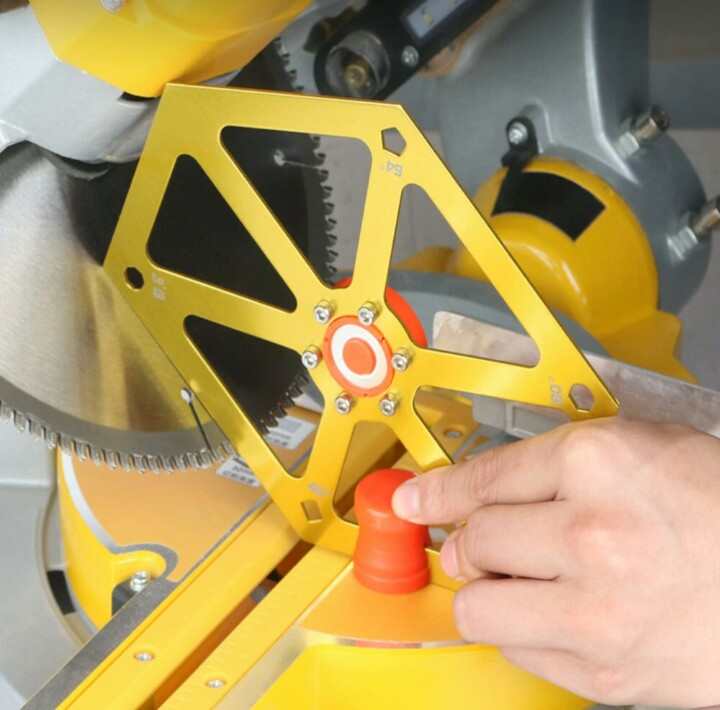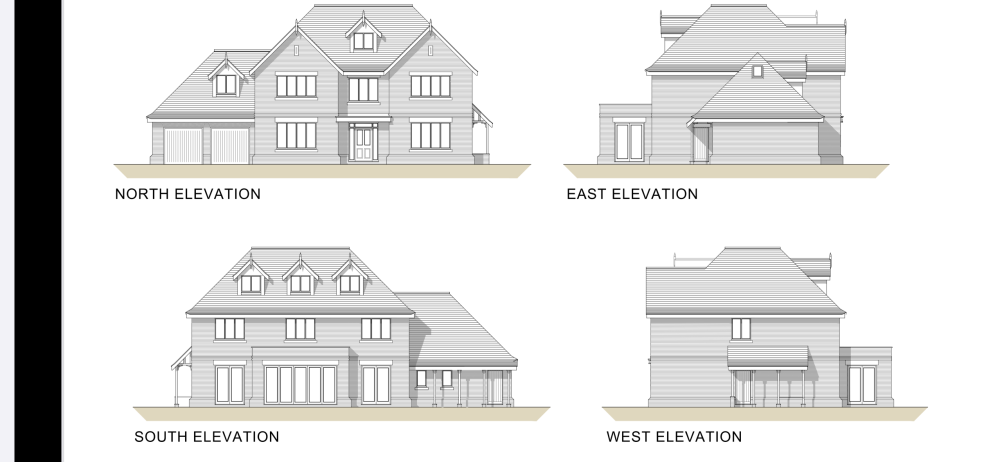Leaderboard
Popular Content
Showing content with the highest reputation on 11/03/24 in all areas
-
Early on in our build I would occasionally go and stand outside the HERAS of a local building site. And I would look really carefully at what everyone was doing there and see if I could apply any of the things that I learnt on our site. Occasionally I would pop in and see the s ite foreman and ask if I could have a look to see how the site was organised. As a result of those visits I; Made myself a site stillage Made a site storage plan. Made a scaffolding store. Stoned the walkways around the outside of the build Bought track-mats to put in front and behind the stillage so that access to the contents was quick , easy and cleanable Kept the road outside our site spotlessly clean no mud, no dust, no stones. Put some flood lights up, battery ones with a Bluetooth connection so that over the winter they came on and switched off randomly. (Bosch) We could also switch them on from inside our house. Made a concrete overspill 'pond' for the when the concrete wagon mixer needed to flush its pipes. Later I turned that concrete 'pond' into a flat area for storage and for a temporary work surface. Stupidly I put a whole load of waste rebar in it without thinking through the consequences of what would happen when I came to break it up. Live and learn eh.... I put some wheels on the bottom of for HERAS panels so that moving it was quick and easy at the beginning and end of each day. I also made a safe place for van drivers to pull off the road and make their delivery in safety.3 points
-
Gabions can look great. You can creat a structural butress in them if you want to design an Arctitectural seating area for example.. The quality of construction matters. cheep infill and badly placed = less perfomance.. time taken to lay the stone.. like a dry stone wall can increase the service life. You can use decorative stone on the outside.. grow plants on them and so on. Great habitat for wildlife too once they age a bit. The structural design concept is a little different in that you expect them to move about quite a lot unlike say a concrete retaining wall which can't move quite as much.. well you hope not!. These things move which makes them flexible and forgiving and so long as you recognise that you are off to a good start. The presence of the trees makes the design more fun! I think some of the keys to this are: 1/ You need good ground information.. soil properties, water tables and hydraulic gradients etc. 2/ A good detailed topographical survey so you can see just how much you need to retain, the slope of the ground and the location and type of trees / vegitation. 3/ A good idea from you as the Client about how you want to finish the driveway and how often you anticipate maintaining it. The retained soil may move about so if you have a tarmac drive it may crack. 4/ Available drainage paths for draining the soil.. but then you need to watch what happens to the trees if you take their water source away or make them compete harder for water. You can do a lot to help yourself here (as you are doing) by trying to get your head around the things we need to know and importantly why.. to enable a design that meets your expectations economically and also in terms of later maintenance. If you can gather some of this info then it will help you find the right SE for you.2 points
-
Assume you have zero floor insulation? If so don't do it, you will spend more money heating other things and not the house.2 points
-
Not posted an update in a while but was focused on getting the outside of the house rendered, painted, guttered and drill vented before the scaffolding came down. It was off hire on a Monday and I worked 11-12 hours days on the Saturday and Sunday to get through a few tasks including chain drilling the MVHR vents (2) among other things. Basically anything at height. Anyway, while peeling the masking tape off the soffit while lying down on my side I moved to all fours to get up and my back went into spasm! I was still able to move around but the next day it was sore. Off I went to the Chiropractor the next day and he thankfully sorted me out. A few weeks later and I was putting the floor down in the new attic and again lying down while slightly propping myself up to secure the T&G OSB with screws and I felt my back get sore. The next day again I was in agony and off to the Chiro the next day. The following week I took a different approach to finish the attic, very carefully, and remaining standing on the ladder all the time working backwards towards the hatch opening. Thankfully this avoided any further injury and I completed the task. Fast forward a few weeks later and I visited my mum, contracted covid and while propped up in bed the OTHER side of my back went. And this was no fun. No Chiro for me while testing positive (had to wait another 7 days) and it really set itself in. As soon as I tested negative I booked in to the Chiro but despite two visits it was still sore. I could do a 1/2 day at the weekend and a good nights sleep could repeat but it was hindering me. I'd booked 30 x 2x4 and 100 2x6 for delivery this week before the latest episode and had taken the week off work. After they arrived on Tuesday (I insisted on a HIAB thankfully so they could be dropped inside my boundary where I could secure it) I moved the thirty 2x4's inside but felt my back beginning to go again. I lay down but it was getting worse so I covered the remaining lumber and headed home. A few bad days to follow. I tried one Physio my neighbour recommended on Wednesday but it didn't shift the slow, gradual healing along much. I tried Panadol, Ibuprofen, even CBD oil but nothing was helping. I went to a local Physio yesterday and have received some treatment and exercises so I'm resigned to 2-3 months of recovery (my estimate, not theirs) to make sure this is really healed but start Pilates as soon as the Physio says I'm ready. I've been resting up all week and just have to accept I'm the weakest link! In an 18 month project so a few weeks isn't that much but I'd hoped to crack on this week after covid etc. Not to be!! Yeah, so take care of yourselves, especially if you are solo. I've accomplished so much over the last 10 months to get here, it was just one deadline where I pushed my body too hard and am now paying the price. It was a fear of mine but now its here I'm just going to rest, get back to work, wait for my back to be comfortable again (it's still sore) and take things easy for a while (I can plan electrical, home automation etc in the meantime!). How do people in their 60's even do this?!! I'm in my 50's and finding it hard! Fair play to those folks!! Anyway, Off to lie down, I'll call a few favours to get the lumber indoors when I fell I can help at least a little and only tackle jobs when I have a good back regime in place. I reckon it's 8 more months to finish. Can't wait!!!1 point
-
On Monday the second gable is poured and most of the internal bracing, corner bracing and window shuttering is removed. Tuesday rains all day so no work on site. The internal floor is under 1 inch of water with no way to escape, without us brushing it towards soil pipe. Good to know we are airtight at the floor/wall joint. The steels are installed, we were supposed to have wooden roof beams but somehow this was not calculated by the architect who insisted the roof truss company would do the calculations later. The roof truss companys only want to do the calculations when they know you are ready to order and they said the beam spans could not be done. So on the last minute we had to go back to the SE who worked out our steel beams and the total cost of roof went up £8k. I wish the architect had suggested the SE looks at the roof calculations earlier but unfortunately we just have to move on from this, and up to this point we have had no other extra costs. Since we are no longer working with the architect I have had to find a new SAP assessor who I can engage with as the build progresses. We have been discussing how changing the steel beam might change things as the vaulted ceiling can now be higher if we want. This gives us more space to heat up. I also wanted to know the effect of not putting as much solar on the roof or not having the wood burner changes the SAP results. Since having a smart meter fitted at home we have reviewed our current electric usage and decided that less solar (7.5 kwp instead of 11 kwp) but with the ability to add a battery. Also I think aesthetically one row of 15 panels will look better. Total Man days of labour week 7 is 16 days. Total to date b/f £44925 New Design Stage SAP Calculations (previously done by architect) with ongoing advice about changes that will affect the SAP and to include the As Built SAP documents and EPC at completion £720. It does seem a lot compared to online prices but for peace of mind knowing that we can if we choose to only put 6kwp of PV on the roof instead of 11kwp, is an overall saving. Total to date £456451 point
-
Reading between the lines, I suspect @Crofter is asking at what size does room in roof make sense? Ours is 150 square metres total and that is what we in Scotland know as 1 3/4 storey. With the "normal" roof pitch here being 45 degrees (which I would thoroughly recommend for a variety of reasons) it is easy to turn a dead loft space into very economical extra accommodations. Our walls extend just over a metre above the first floor level before they turn into "roof" and by building the roof as a warm roof hung from ridge beams, you get almost all of the upper floor as usable space with no obstructions or wasted space. So in simple terms going from a bungalow with a silly flimsy W joisted roof that is wasted space to a proper room in roof design is a very economic way of almost doubling your floor area. Then it comes down to good design to minimise wasted space, i.e efficient stairwells and minimum corridors to get to rooms. The English vernicular of very low pitched roofs make this a whole lot harder.1 point
-
we got a man with a crusher, we dug out 1/2 m x 250 sqm of very hard concrete. he crushed it and we had for hardcore, topping the drive when it got muddy. we will have the same again, but will use under the base for the stables and cart lodge and hubbys multiple sheds so we paid crusher about 1k, but don't have to buy any hardcore in. garden waste we separated for our log burner or just set fire to it1 point
-
Redo the pointing in the brickwork above so the water is shed out the ways and see if that helps.1 point
-
1 point
-
Got a part time job as a standup comedian then have you? Earlier in the build, I walked round the site and quietly cleaned up after every single tradesman Until the money ran out. When all is said and done I pay for their skill. That said we currently have the sparkles in. Two smashing lads who work for a local company; they hoover up after themselves! Christ on a Bike! All those thousands of little bits of copper wire. They get everywhere. Found some in my knicker drawer. Ouch. They illustrate the rule. Owners clean up because customers pay for the skill - trades untidiness is an honourable tradition to be held in great esteem. Because it reminds us that we should bother about them. And know sod all ourselves.1 point
-
Welcome Annas As a general rule, existing floors do not have enough insulation to take full advantage of UFH, it is the insulation that needs the depth. Have a look around in the specific section on here, there is a lot of information. Using a Google site search is better that the forum's search.1 point
-
It will be scary if it's not properly restrained against not least movement in the direction of the ridgeline... in fact likely dangerous. John you have a number of pivot points (like rocker bearings) and due to the nature of steel fabrication and behaviour it will tend to buckle sideways due to the vertical load. I can see where you are coming from ( gables taking out the wind load I assume) but it is very important that this arrangement of steel has solid restraint against moving in the direction of the ridge and also perpendicular to the ridge. Please check your SE drawings and make sure you follow them religiously.. don't let the builder / steel fabricator go off and do their own thing. Do this before you load up the roof further. If in doubt get some temporary bracing in.1 point
-
What they are saying is almost correct. These depths of foundations are for the amount of water that a mature tree will suck from the ground. So we assume that the trees will continue to maturity. If these were immature then the effect is less. How much less, I don't think is known. Thus your depths are on the safe side. But the depth stated us as if they are retained. And there has been one winter of recovery. It's not for me to say more and I was mainly checking it wasn't all to the most extreme depth.1 point
-
Hi, Just joined as I have bought an old house that needs lots of work so I will have some questions I suspect! I may, be able to answer the odd one as well1 point
-
+1. I splashed out on a Dewalt and the accompanying leg stand for it. Well worth the money. It’s done everything from skirting, flooring, stud work and lots more. just don’t tell @Pocster I bought yellow and black as he’ll never let me live it down.1 point
-
1 point
-
The building regs. A long time ago i did these calculations from first principles. 50mm dia up to 2m. I've forgotten it all now, but my point is that it is complex. Someone has done these sums for normal uses and published them. The building regs have these in chart form. Using them is easy and slightly conservative, so do that. Most importantly, avoid sharp turns as they severely disturb flow. Also note that too steep a slope and too big a pipe cause solids to be left behind....the charts cover that too.1 point
-
It's horses for courses though to some degree. We don't know what the OP wants it for. Knocking up sheds or planters, cutting up pallet wood where you'll likely hit as staple or nail. I wouldn't want to be without my Evo saw. Cutting steel, bricks etc. It does it all to an acceptable degree for what I want.1 point
-
I found exactly the same. That is, anecdotal use involved an osb sandwich, while the actual bba certification calls for the waterproof layer to be directly on top of tr27. I think osb under the tr27 is in a danger zone, should anything go wrong with the vapour barrier below or the waterproof layer above, and will rot. However practically not doing that makes for a springy roof surface that can easily get damaged by foot traffic. I went with osb under epdm, put lots of solar panels on it, walk about on it, I’m happy with it. I especially liked the osb tg4 interlocking as it made for a nice flat surface which I might not have got with tr27 directly as I was doing a refurb, and not starting with a perfectly flat surface. The only thing I’d do differently is choose a lighter colour membrane, what little of the epdm is visible around the PV gets hot in the summer sun.1 point
-
I have an early, 255mm, Rage 3, sliding mitre saw. The nephews each have later model, 255mm ones that seem more accurate but I don't think it's a wear issue on mine. I think Evolution have improved the design. I don't have mine set up on a bench just grab it, manhandle to where I'm working, the car etc. I then need to set it up every time if I want an exactly square cut. I use one of these: OSALADI Carpentry Angle Ruler Industry Protractor Angle Miter Gauge Miter Angle Finder Metal Stencils Finder Measuring Ruler Goniometer Angle Finder Aluminum Alloy Work Carpenter Magnetic https://amzn.eu/d/fsI2C8O Useful as a periodic checker even if the saw is set up on a bench. It allows a fairly acceptable degree of repeatability for say mitre cuts. My mate has a big DeWalt sliding mitre saw, several hundred Pounds worth. The Evolution and DeWalt are streets apart. He'll do 6" skirting on his and it's perfect. By the same token his can't cut conduit, Unistrut or with a change to the Evo diamond blade, brick slips. Imo the Evo saw is nearer to a rough and ready shed/fence building saw than something a proper chippy would use for say cabinet making.1 point
-
I'm a jack of all trades and master of none ,auto mechanic by day ,sheepfarmer and homesteader the rest of the time,1 point
-
1 point
-
@ToughButterCup Can you please elaborate? Was it for a similar task (gabion / driveway)? Can you share any details? Thanks1 point
-
They will want 100’s of cubic meters to be worth the trouble, I used to sell mine to a couple of different power station suppliers.1 point
-
I lined it up perfectly in the end..BCO have signed off. Just need to plaster!1 point
-
The wall between an attached garage and a dwelling and a wall between a pair of semi-detached houses would be domestic examples of a compartment wall.1 point
-
It’s usually But can be done with two walls together with a minimum of 50 mil void with fire stops along the perimeter But can be done single (Shaft wall) Needs to be done in none combustible MF or masonry If it’s in a void loft ceiling etc It can be done with a curtain1 point
-
A firewall is a generic term. A compartment wall is a fire-resistant wall that subdivides a building into separate sections.1 point
-
Hi All, just came across this very helpful forum and wanted to stop by and say hi. A little about my journey so far: I purchased a bungalow in Berkshire with a reasonable plot in 2022, got planning a year later for a replacement dwelling - 4000sq ft over 3 floors, started the building works only a couple months ago. So far the bungalow has been demolished, trenches dug and filled and all the utilities have been run to desired locations. Currently we are completing the install of beam and block which is nearing completion. I’ve got a main contractor who is building the shell but I’ll be looking to pull in on your expertise on this platform to source everything else I need, from roofing, solar panels to bathrooms and decorators etc etc. And of course share my journey and document all the highs and lows that I’ll most likely experience. Elevations attached for your enjoyment 😀 Thanks, Gurpaul.1 point
-
1 point
-
If you're planning a shower, then just choose 50mm diameter pipe. And make sure that the maximum flow capacity of the shower trap is more than the flow from the shower head(s).1 point
-
Thank you everyone. Your comments are invaluable and I suppose I was just doubting myself. We live on site and will be managing the sub-contractors on a day to day basis, so will take on role of Principal Contractor, or not as we are self builders. Building control has been passed and ironically our building control officer (private company) is the same person who did our BC on our last project. We had our structural engineer's drawings double checked by a second SE as we had queries on original, there is underpinning to existing steels involved and very deep 2.2m foundations on one part due to trees that were removed 15m away! Anyway, wish us luck and hoping to be done in 12 months1 point
-
While you definitely need a contract and a schedule of works for a main contractor It would be unreasonable for you to expect a subcontractor to sign a contract and I would imagine that legally it wouldn’t be worth the paper it was written on HSE is totally your responsibility While your subies won’t take any notice Plenty of signs are best Report to office hats boots etc Accident book and first aid kit Bum covering on your part1 point
-
The value of this thread is a legacy for future buildhubbers. I relied on previous such threads, and as a result we now have heating mats going under the bathroom tiles for nice cosy toes in the mornings, which was not in our original plan.1 point
-
Thanks @Iceverge I’ll start another thread a bit later today regarding the Foamglass etc.1 point
-
Thanks both. Tile and a half makes good sense if you could get one. I hadn't thought of that. I think I'll cut the two rafters and get the tiles lined up.1 point
-
Hi all This is not work we plan to carry out ourselves. However, our landscaping is happening and our sparky 'delayed'. We are planning to put a 4kw-6kw solar PV system on a single-storey outbuilding. The inverter, batteries etc... will all be inside this outbuilding. As our paths and garden are half dug up we wanted to run whatever cables we need in the ground and leave access on both ends for whenever the sparky turns up. The distance between the outbuilding and the consumer unit is approximately 30m. We also need power for the outbuilding too. Therefore can anyone recommend what cables (armoured I assume) need to be put into the ground? Thanks in advance.1 point
-
As a point of reference, the standard install practice for my Solax hybrid inverter's CT clamp is to extend it (ours was done with CAT6 internally, the manual does not specify) and the install manual says not to go over 100m, so plenty of room to play with. Ours runs ~10m with no issues.1 point













